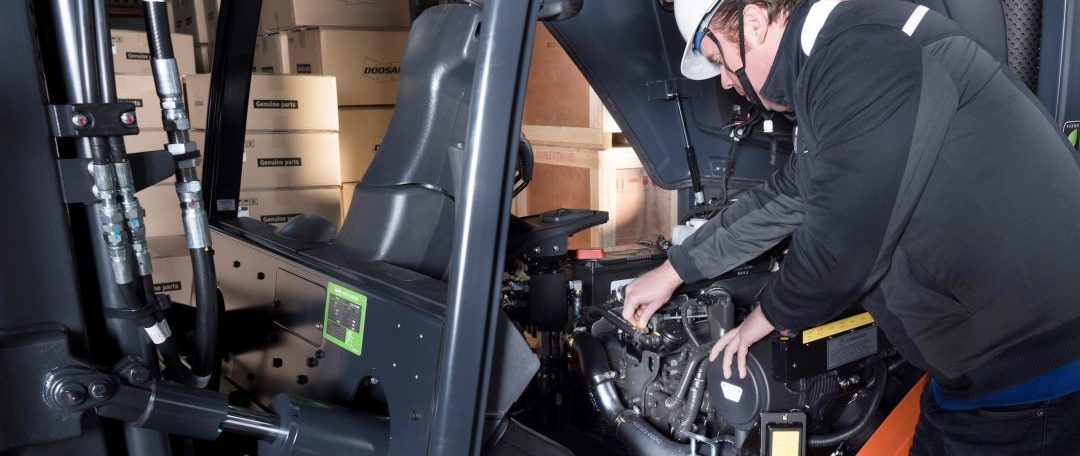Electric pallet trucks are crucial pieces of equipment for a wide range of operations, from logistics and distribution to warehousing. As a result, every pallet truck on-site needs to be able to work at optimum performance. Representing an enterprise’s ongoing investment, electric pallet truck maintenance and servicing is key for a firm to get the most from them for years to come.
Electric-powered pallet trucks are engineered to provide a maintenance schedule that is simpler and easier to manage than traditional manually operated options. The main reason is that these modern material handling solutions employ electric motors to perform heavy lifting, instead of depending on more complex systems involving hydraulics. Additionally, manually operated hydraulic equipment involves a range of issues that pallet trucks don’t experience by design. These include needing to check and top up the supply of hydraulic fluid and managing air bubbles and leaks when they occur.
Yet, electric pallet trucks models, do have unique maintenance considerations that must be accounted for if firms want to receive maximum efficiency from them during operation.
Read on some important considerations regarding the maintenance and service needs of electric pallet trucks.
Maintaining electric batteries
The key difference between a manually operated and an electric pallet truck is the use of electric motors. These powerful components are powered by an electric battery designed for heavy-duty. A strong understanding of battery use and best practices for care are key to pallet truck maintenance.
Most pallet trucks powered electrically offer users the ability to regularly replace their batteries. As a result, enterprises can keep pallet trucks running continuously around the clock by charging up a fresh battery while the other is installed in a working truck. Fortunately, changing batteries are designed to be straightforward.
However, operators must understand the importance of removing batteries gently and safely from trucks and into charging docks. Any damage incurred can potentially impact the performance of the battery or stop it from functioning entirely. Although batteries are engineered to be robust, continuous exposure to damage will fail.
Protecting pallet trucks from the environment
The working conditions that electric pallet trucks are used in must be considered. Cold and wet working environments can impact performance. Batteries operate less efficiently in colder temperatures and water and electrics are always best avoided.
To maintain electric pallet trucks in all weather, a wise purchase can be protective sleeves designed for this purpose. Whether you are operating in cold or damp indoor conditions or outside, covering key areas of a pallet truck can protect it sufficiently allowing its systems to operate effectively.
Fork assessments
Taking the brunt of any job, the business end of a pallet truck, commonly called its forks, are prone to wear and damage. Inspect forks regularly as even a small amount of wearing or damage can affect how a truck operates.
As part of your daily checks, look for the following. Examine areas for paint chipping and crouching down examine forks for signs of bending, bulging, or buckling that may indicate structural damage. Make sure forks are not bent upwards or to the side.
Any damage identified must be recorded and reported. While paint chipping is expected structural damage should be fixed quickly. Such problems typically worsen over time and become more time-consuming and costly to repair.
Daily checks and general maintenance
Electric pallet trucks require appropriate lubrication at least once a month to grease axles and wheels. Regular cleaning is also necessary to ensure that a build-up of grime, dirt and dust never impacts performance. Finally, trucks must be stored in a secure and dry environment when not in use.
Preventative pallet truck maintenance is always better than fixing a problem, making proactive daily checks the best option by far. Checks should be carried out before shifts start and at their end. First perform a visual walk-around check for any damage to wheels, forks, and controls. Next, assess the electrics ensuring the truck powers up correctly and can hold a charge. Move the truck from side to side, backwards and forwards to spot any malfunctions or unusual noises. Finally, make sure the battery is undamaged and operating as expected.
How often should electric pallet trucks be serviced?
While daily checks and routine maintenance are essential to keep trucks running properly and protect your investment, they will still require servicing. As a result, it is typically recommended that electric pallet trucks should be periodically serviced by a qualified engineer. Further to this, advice, the British Safety Council states that annual services are acceptable for pallet trucks that see around 40 hours of usage per week. However, if an electric pallet truck is used for between 40 and 80 hours each week, then it should be serviced every four months to ensure safe operation.
In sum, by following these important checks and services, companies can ensure that they get the best use of their electric pallet trucks.
Get in touch with our friendly team to chat about how we can help you with electric pallet trucks and stackers for your business.

